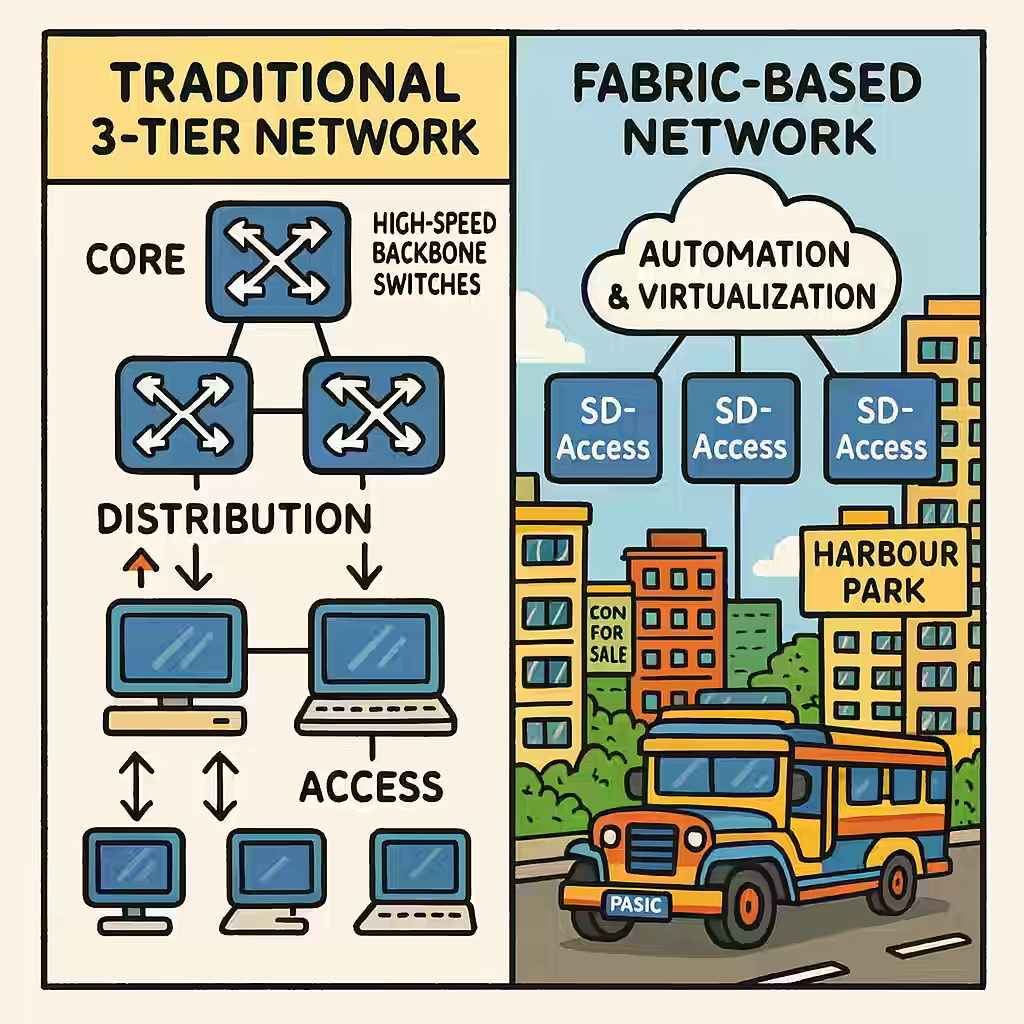When businesses scale up, their network infrastructure must evolve just as quickly. A simple flat network might work for a startup, but it often crumbles under the weight of growing user demands, applications, and devices. This is where structured enterprise network designs—Tier 2, Tier 3, and Fabric—play a crucial role, along with proactive capacity planning.
Why Network Design Matters
Enterprise networks, much like urban road systems, need thoughtful planning to handle growing traffic. A well-architected network improves performance, supports scalability, ensures reliability, and makes troubleshooting significantly easier. Without a clear design, bottlenecks and outages can quickly disrupt operations.
Understanding Tier 2, Tier 3, and Fabric Designs
Tier 2 (Collapsed Core Architecture):
Ideal for small to medium enterprises, this design merges the core and distribution layers into one. It’s simple and cost-effective, reducing the number of devices and overall complexity.
- Strengths: Lower cost, easier deployment and management.
- Limitations: Less redundancy, scalability constraints.
Tier 3 (Traditional Hierarchical Design):
Best suited for larger networks, this model divides the architecture into three layers: Access, Distribution, and Core.
- Access Layer: Connects end-user devices to the network.
- Distribution Layer: Aggregates traffic and enforces policies.
- Core Layer: High-speed backbone that connects distribution layers.
- Strengths: Excellent scalability, fault tolerance, and modularity.
- Limitations: Higher infrastructure and maintenance costs.
Fabric Design (Software-Defined Access – SD-Access):
The most modern approach, fabric-based architecture virtualizes the network and introduces automation and centralized management.
- Strengths: Policy consistency, segmentation, scalability, automation.
- Limitations: Requires deeper expertise and investment.
Key Considerations for Capacity Planning
Effective capacity planning ensures the network can support both current demands and future growth. Poor planning often leads to bandwidth shortages, hardware strain, and user dissatisfaction.
- Growth Forecasting: Estimate future users, devices, and application needs.
- Traffic Analysis: Account for peak usage periods, not just daily averages.
- Redundancy: Implement failover options at critical points.
- Uplink Optimization: Ensure trunk links can handle aggregate traffic.
- Physical Resources: Consider power, space, and cooling needs.
- Scalability: Choose equipment and topologies that allow for easy expansion.
Config Sample: Setting Up VLAN Access and Trunk Ports
interface FastEthernet0/1
switchport mode access
switchport access vlan 10
spanning-tree portfast
interface GigabitEthernet0/1
switchport trunk encapsulation dot1q
switchport mode trunk